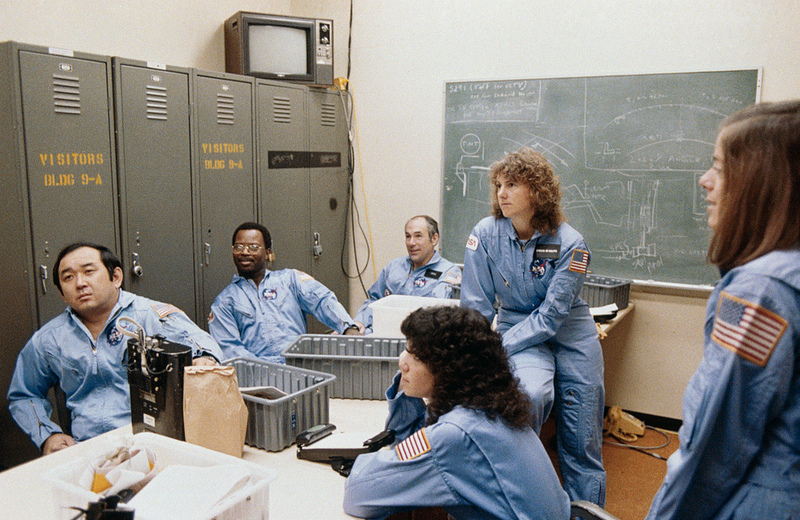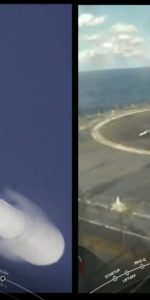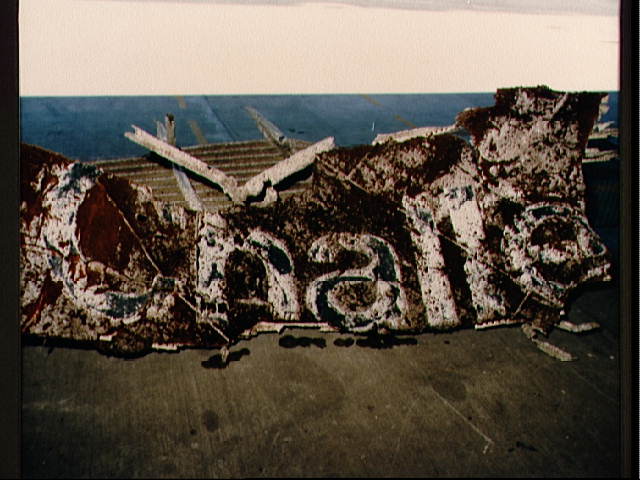
For those of us of a certain age, there can be few more horrific images imprinted upon our long-term memories than the sight of shuttle Challenger exploding in the sky above Cape Canaveral on 28 January 1986. For me, a nine-year-old boy growing up in England, the event was played out live on television and the sheer enormity of the tragedy was difficult to comprehend.
The loss of Challenger and her seven astronauts—Commander Dick Scobee, Pilot Mike Smith, Mission Specialists Ellison Onizuka, Judy Resnik and Ron McNair and Payload Specialists Greg Jarvis and schoolteacher Christa McAuliffe—totally reshaped the subsequent history of the shuttle program. An innocence, astronaut Robert “Hoot” Gibson once said, was lost that day.
But getting Challenger into space for Mission 51L on that freezing January morning, all those years ago, had been an exercise in frustration. It was a frustration NASA could ill-afford. As well as deploying the long-awaited second Tracking and Data Relay Satellite (TDRS-B) and the Spartan-203 free-flyer to observe Halley’s Comet, the six-day flight would feature McAuliffe, the first private citizen to fly aboard the shuttle.
Picked from thousands of applicants for the “Teacher in Space” initiative in July 1985, she would teach two lessons from Challenger, affording a major publicity shot in the arm for NASA as it sought to demonstrate the shuttle’s capabilities and convince lawmakers to support a permanent Space Station in the 1990s.
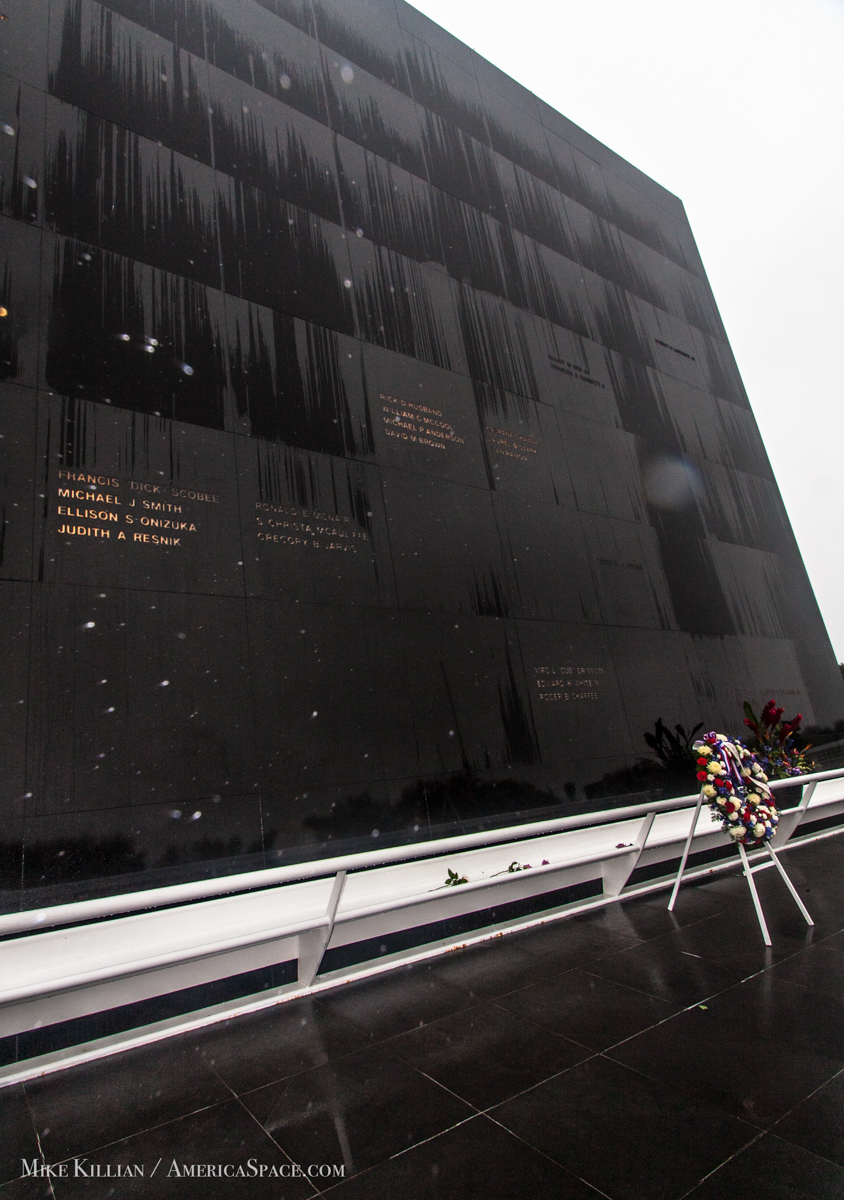
In August 1984, President Ronald Reagan announced the Teacher in Space Project (TISP), requesting NASA to find a gifted educator with the ability to communicate enthusiasm to students from orbit. The not-for-profit Council of Chief State School Officers was selected by NASA to co-ordinate the selection process, and from November 1984 until February 1985 more than 11,000 applications were submitted. These were winnowed down to 114 semi-finalists by state, territorial and agency review panels, then narrowed still further to ten finalists.
In June 1985, at the White House, Reagan remarked (with tragically unknowing prescience) that “whichever of you is chosen might also want to take under consideration the opinion of another expert: The acceleration which must result from the use of rockets would damage the brain. So consider yourselves forewarned!” It was typical Reagan humor, but he could not possibly have known that such dire predictions would come awfully true.
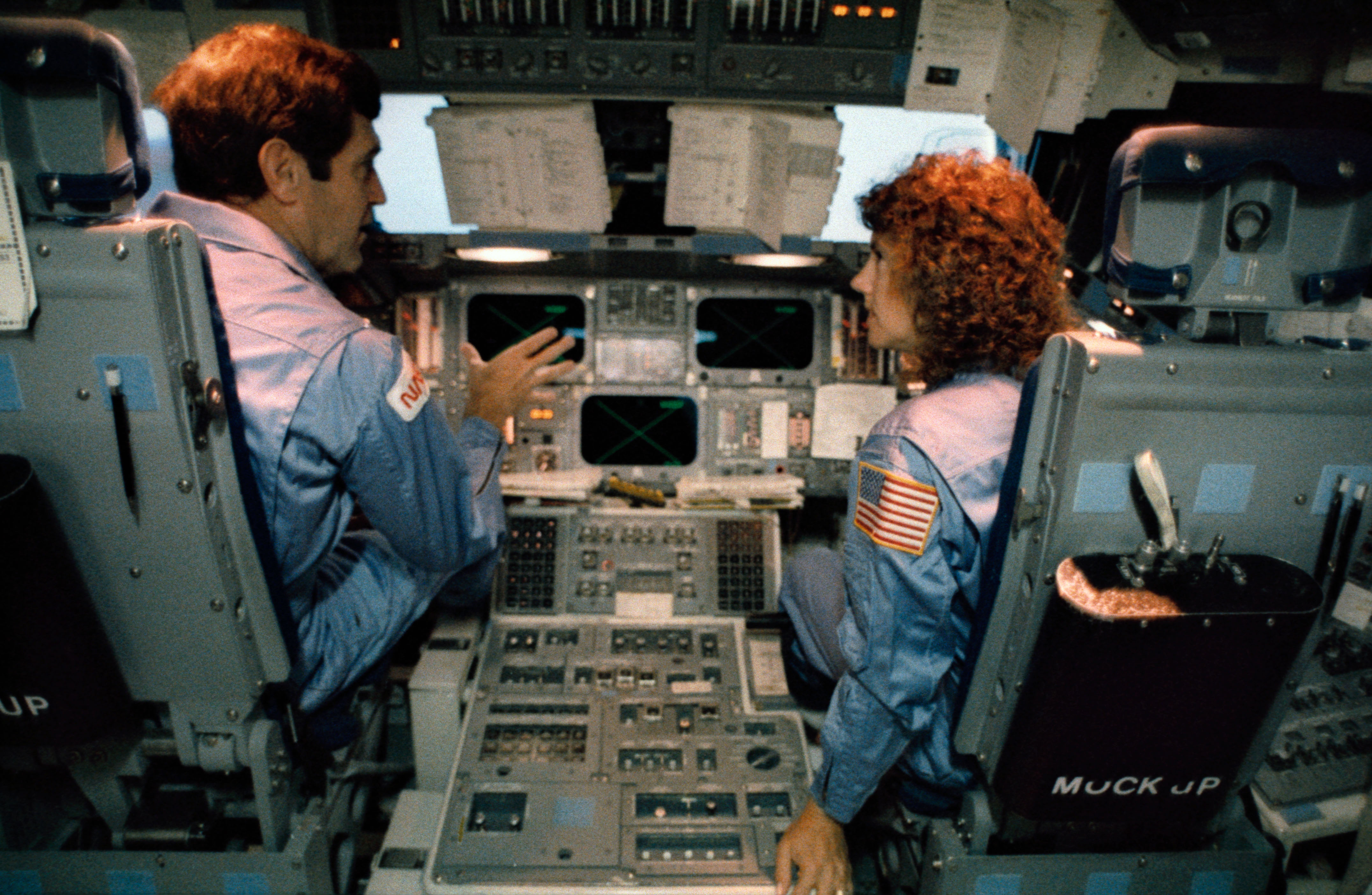
Late in July 1985, Vice President George H.W. Bush formally announced McAuliffe as the prime candidate, backed up by Barbara Morgan. They began training with Scobee’s crew at the Johnson Space Center (JSC) in Houston, Texas, the following September, and by the time they arrived in Florida for launch in January 1986 their date with destiny had been delayed until month’s end, due to problems getting shuttle Columbia home from her own mission. Delayed repeatedly by high winds, a frozen hatch handle and other technical troubles, Mission 51L was ultimately rescheduled to fly on 28 January.
But on the night of Monday the 27th, temperatures at the launch site plummeted, precipitously, to an unseasonal -13 degrees Celsius (8.6 degrees Fahrenheit), forcing technicians to switch on safety showers and fire hoses at newly-refurbished Pad 39B to prevent water pipes from freezing. This proved particularly worrisome for the ice inspection team, who began their final “sweep-down” of the pad area in the early hours of the 28th and they were obliged to knock a large number of 12-inch (30 cm) icicles away with broom handles as the countdown clock continued ticking toward launch.
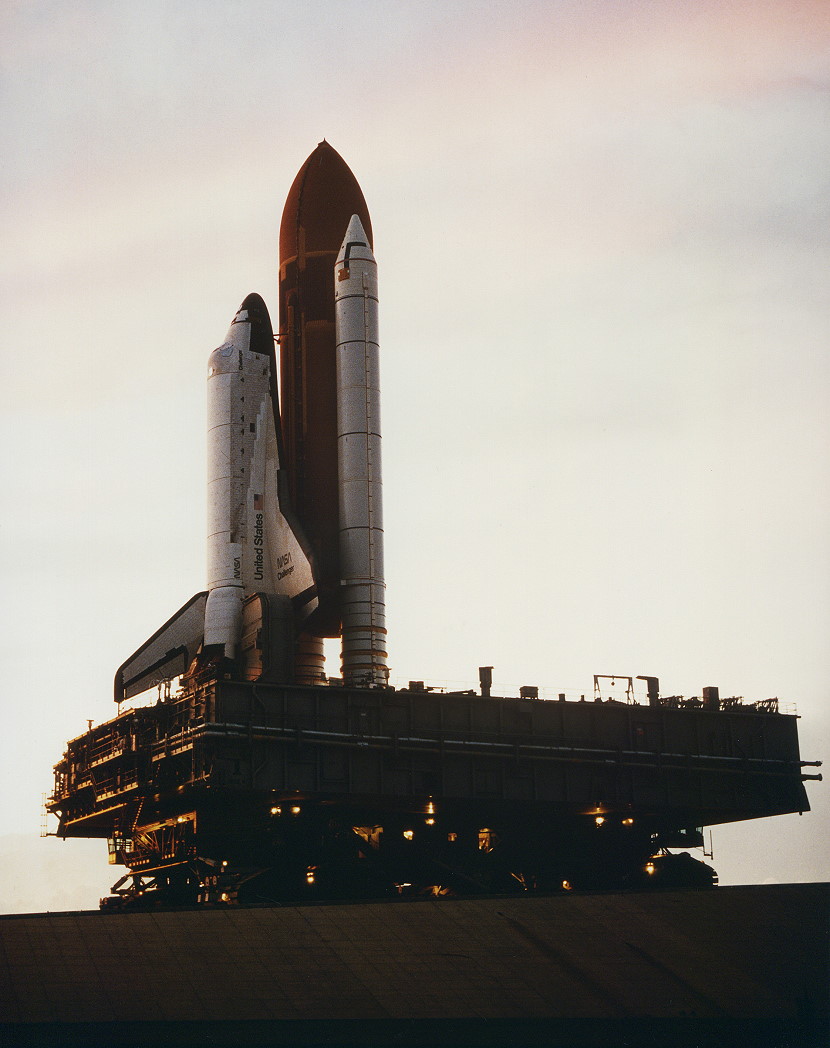
Next morning, the Sun rose on the coldest weather conditions under which a shuttle launch had ever been attempted, a fact that would be investigated in depth during the subsequent presidential inquiry into the cause of the tragic events later that day. The copious amounts of ice on Pad 39B forced an additional two-hour delay to permit thawing.
Nonetheless, many of the astronauts’ families, including Scobee’s wife, June, doubted that NASA would fly in such conditions. Her husband insisted, over the phone that morning, that he felt it was safe to do so.
But on this occasion, Scobee was wrong.
Mission 51L began at 11:38 a.m. EST. Six and a half seconds before liftoff, Challenger’s three main engines thundered to life and, as the countdown clock touched zero, the assembled spectators at the Kennedy Space Center (KSC) were greeted by the ear-splitting staccato crackle of her twin Solid Rocket Boosters (SRBs). It proved to be the failure of both the primary and secondary O-ring seals at the base of the right-hand booster, Rogers Commission investigators would later conclude from photographic, physical, and other evidence, that was directly and solely responsible for the destruction of Challenger that day.

Clear evidence of the boosters’ fallibility, made public for the first time by the Rogers report, occurred serendipitously when, 0.678 seconds after liftoff, a video camera mounted close to Pad 39B captured “a strong puff of grey smoke…spurting from the vicinity of the aft field joint of the right Solid Rocket Booster.”
The camera had identified the tell-tale result of both the primary and secondary O-rings—which were meant to stop searing gases from escaping between the joints of the booster segments—failing, disintegrating, and streaming away in the moments after ignition. More significantly, the point of failure directly faced the External Tank and its volatile liquid oxygen and hydrogen propellants, which fed the shuttle’s main engines. Any flame from the compromised booster could now play on the tank like a blowtorch, igniting its contents in a fireball and destroying Challenger, together with the entire launch complex.
Years later, Morton Thiokol structural engineer Roger Boisjoly would express astonishment that the vehicle did not explode on the pad; by an incredible sequence of events, a chunk of solid fuel temporarily plugged the O-ring hole, and the first minute of ascent proceeded normally.
Several more puffs of increasingly denser, darker smoke—further indicative that the products under combustion were indeed the grease, insulation, and rubberized O-ring material from the joint seals—were recorded by other ground-level cameras between 0.836 and 2.5 seconds after liftoff, as the boosters’ hold-down posts were severed and the shuttle commenced its climb away from Pad 39B. As each puff was left behind by Challenger’s upward trajectory, the next fresh puff could be seen close to the level of the joint. The frequency of these emissions was directly related to flexure within the structure of the SRB as the gap in its joint cycled open and closed. The last incidence of smoke above the joint was timed at T+2.733 seconds. In the milliseconds that followed, a combination of atmospheric factors and exhaust from the boosters made it difficult to determine if any more smoke was emerging from the failure point.
A little under eight seconds into the mission, as planned, the vehicle cleared the tower and began a programmed roll maneuver, moving onto the correct flight azimuth for a 28.45-degree orbit, then pitching onto her back under the control of her computers. Shortly thereafter, at T+19 seconds, to prepare herself for passage through a period of maximum aerodynamic turbulence (known as “Max Q”), Challenger’s main engines were throttled down from 104 to 94 percent, and later 65 percent, of rated thrust.
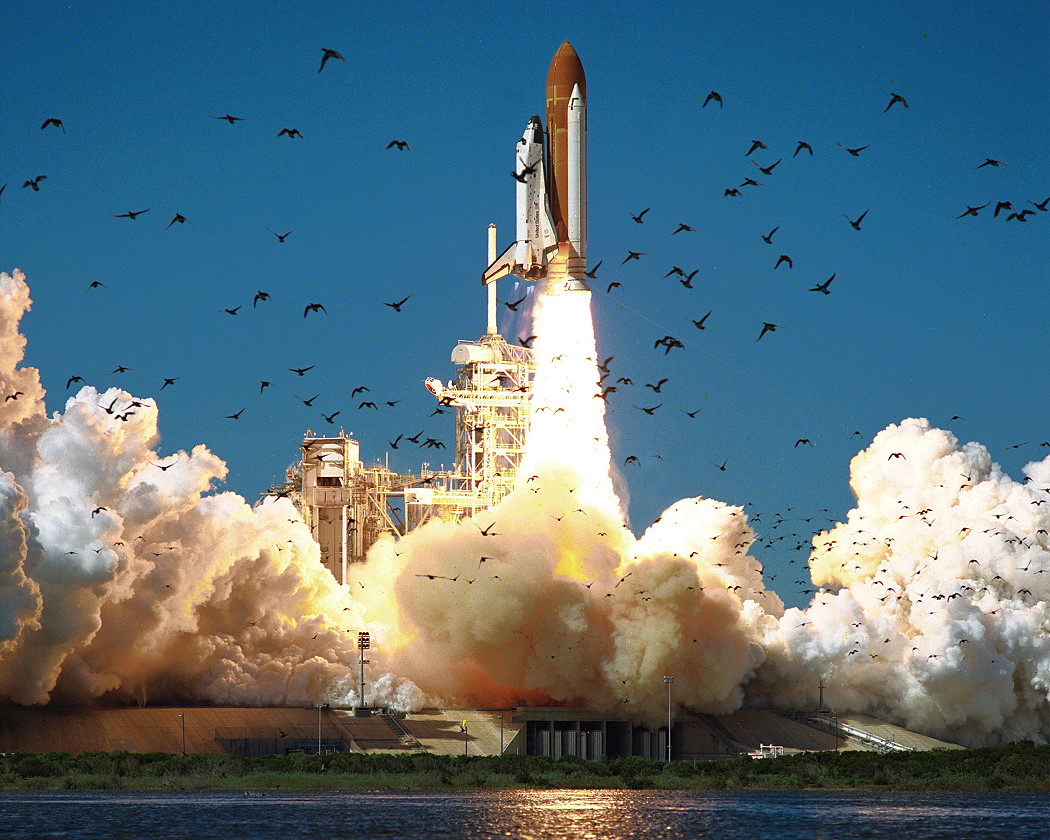
Thirty-seven seconds into the ascent, she encountered the first of several high altitude wind shears, lasting until just past a minute after launch. In its inquiry, the Rogers Commission report noted that the shuttle’s guidance, navigation, and control system immediately detected and compensated for these conditions, and—although 51L’s aerodynamic loads were higher than previous missions in both the yaw and pitch planes—the SRBs, too, responded effectively to all commands.
It is possible that the mission may still have proceeded normally, had the plug of solid fuel remained jammed into the O-ring breach. However, by an incredible stroke of cruel luck, Challenger happened to pass through the most severe wind shear ever encountered by an ascending shuttle stack. The shear dislodged the plug around a minute into the mission. After passing through maximum aerodynamic turbulence, 51 seconds into the climb, her main engines were throttled back up to full power; shortly afterward, at 58.788 seconds, a frame of video recorded the first evidence of a flickering flame from the right-hand SRB’s aft joint. The temporary plug of solid fuel had gone, and, although they were oblivious to anything amiss, the crew’s fate was now sealed.
The flame rapidly established itself, growing into a well-defined plume within half a second. Exactly a minute into the mission, downlinked telemetry pointed to an unusual chamber pressure differential between the left and right boosters—the pressure of the latter was some 11.8 psi lower than the other, indicating a leak in its aft joint. As the flame increased in size, Challenger’s aerodynamic “slipstream” deflected it backward and circumferentially by the protruding structure of the upper ring which linked the SRB to the External Tank, focusing the flame directly onto the surface of the tank.
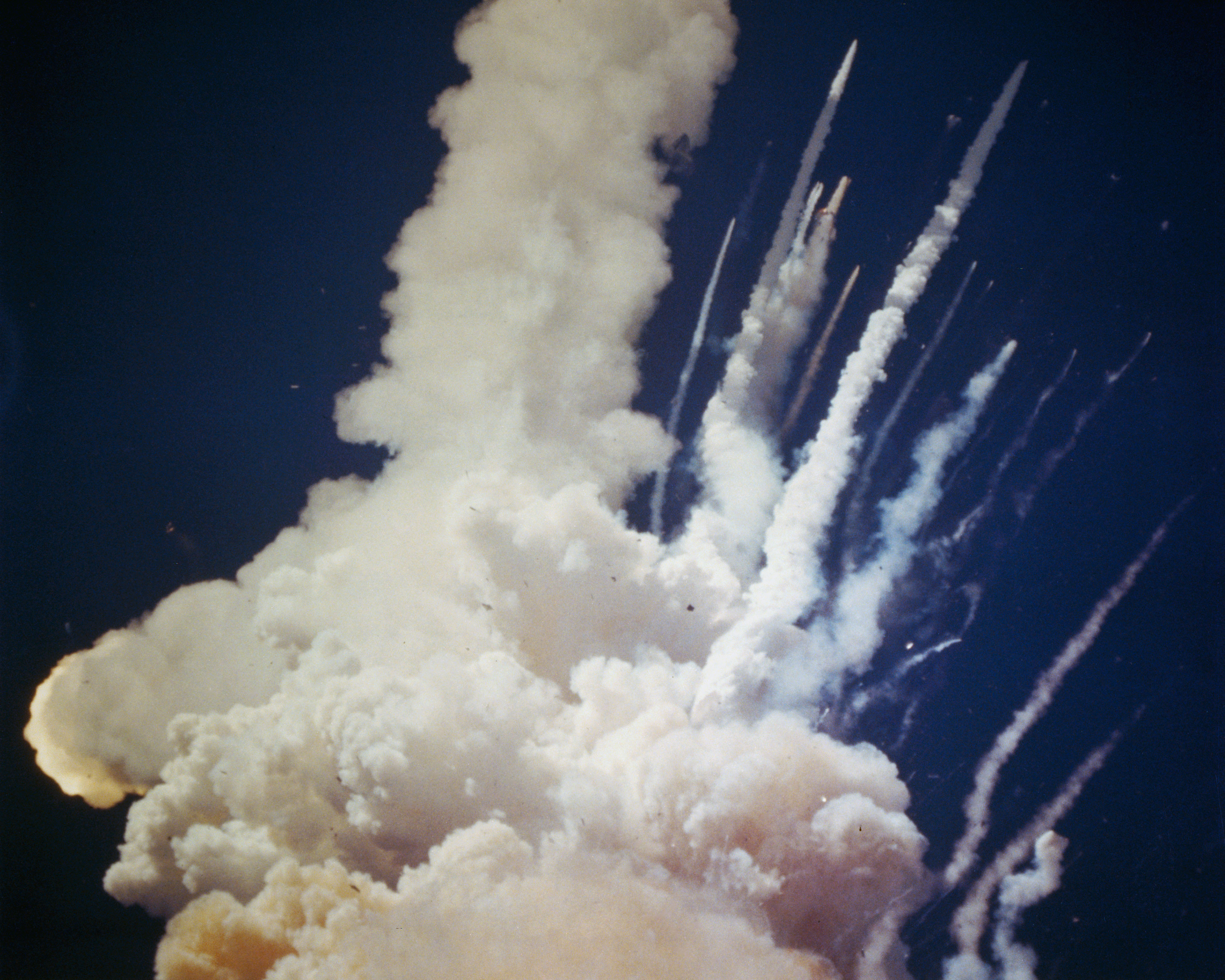
Sixty-two seconds into the ascent, the left booster’s thrust vector control moved to compensate for the yaw motion caused by the reduced thrust from its right-side counterpart. A couple of seconds later came the first visual manifestation that the flame from the damaged booster had breached the lower segment of the External Tank: an abrupt change in the shape and color of the flame, indicating that it was now mixing with leaking liquid hydrogen. Moreover, pressurization data at around this point reinforced the fact that its liquid hydrogen tank was indeed ruptured.
In Mission Control, astronaut Dick Covey—sitting alongside fellow astronaut Fred Gregory at the Capcom’s console—relayed a standard call: “Challenger, Go at throttle up.”
Commander Dick Scobee came back a second or two later. “Roger,” he replied. “Go at throttle up.”
In the seconds that followed, an incredibly rapid sequence of events concluded with the destruction of the External Tank, the separation of both boosters, and the structural disintegration of Challenger. Seventy-two seconds after liftoff, the flame from the right SRB finally burned through the lower of two struts holding it onto the External Tank; pivoting around its upper strut, the top of the booster impacted the inter-tank and the base of the liquid oxygen tank, breaching them both. Nearly simultaneously, around T+73.1 seconds, clouds of white vapor were spotted at the top of the tank and around the area of its bottom dome: The former was clearly indicative of the ruptured liquid oxygen tank, the latter conclusive evidence of structural failure. Almost immediately, at T+73.6 seconds, came a massive—“almost explosive,” read the Rogers investigation’s report—burning of both the hydrogen leaking from the lowermost tank and the oxygen from its uppermost section.
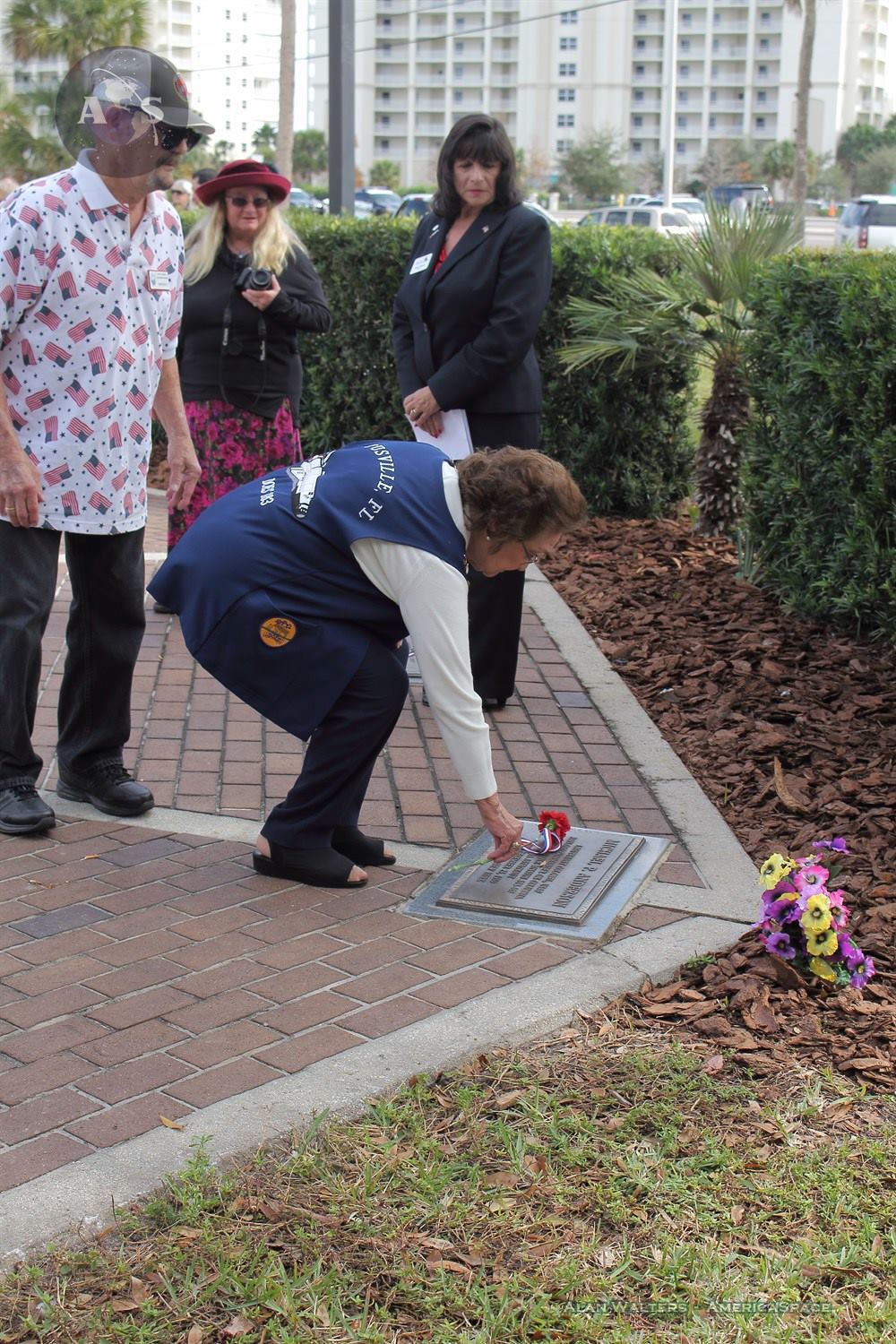
At this point, 51L was at an altitude of nine miles (15 km) over the Atlantic Ocean, traveling at almost twice the speed of sound, and Challenger was lost from view in the resultant explosive burn. Her Reaction Control System (RCS) ruptured during this period, setting off the hypergolic burning of its propellants, evidenced by a reddish-brown hue around the edge of the fireball. Meanwhile, the two boosters, now released of their loads, rapidly climbed away from the catastrophe, but were remotely destroyed by the Range Safety Officer at 11:39:50 a.m. EST, some 110 seconds after launch. “Obviously a major malfunction,” was all Steve Nesbitt, the stunned launch commentator, could remark.
The loss of Challenger, played out as it was in the most devastatingly public fashion, would bring the shuttle program and NASA to its knees for far longer than the 32 months needed to return the reusable vehicles to flight. Investigators would uncover a range of technical, managerial, and other human factors behind the tragedy, and in September 1988 a safer—though still intrinsically unsafe—shuttle would return to flight.
And with each and every launch that followed, right up to the very end of the shuttle’s 30-year history, the launch phase remained arguably the most critical. For each mission, the 73-second psychological barrier was a powerful hurdle for each crew to overcome. Even as Atlantis rocketed aloft for the shuttle program’s finale on 8 July 2011, many hearts missed a beat as STS-135 Commander Chris Ferguson called “Roger, Go at throttle up” for what would be the last time.
.
.
FOLLOW AmericaSpace on Facebook and Twitter!
.
.




